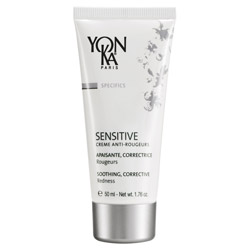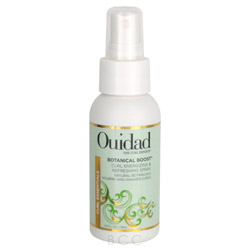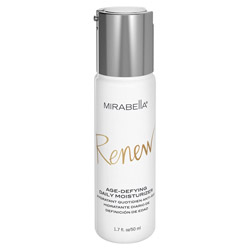Blog Archive
Videos
Alterna
Bonblissity
Color Proof
Enjoy
Ethica Beauty
Evo Hair
Goldwell
Healium 5
Hynt Beauty
Jane Iredale
Keune
KMS
L'Anza
Matrix Total Results
Mirabella Beauty
Moroccanoil
Redken
Schwarzkopf's BC Bonacure & OSiS+
Sexy Hair
Surface
Truth Treatment Systems
Truth Treatment Systems new products
Viviscal Professional
Wella
YonKa
Zoya Gelie Cure Nails
How-To's
Brand Profiles
A (8)
B (2)
C (3)
D (1)
E (3)
G (1)
H (2)
J (1)
K (3)
L (3)
M (7)
N (1)
O (4)
P (6)
R (1)
S (3)
T (1)
X (1)
Y (1)
Ingredients
A (6)
B (8)
C (10)
Caffeine
Carnauba Wax
Centella Asiatica
Ceramides
Cetyl Alcohol
Cocamide DEA
Cocamidopropyl Betaine
Collagen
Copper
Cyclopentasiloxane
D (1)
E (4)
F (1)
G (5)
H (4)
K (2)
L (3)
M (6)
Methylisothiazolinone and Methylchloroisothiazol
Mica
Micellar Water
Microcrystalline Wax
Minoxidil
Mung Bean
O (2)
P (6)
R (1)
S (6)
T (5)
V (1)
Z (1)
2024 (8)
April (3)
2023 (17)
Trending Cosmetics 2024 for Beauty Lovers
Sustainable Beauty - Refill, Reduce, Recycle!
20 Years of Outstanding Beauty
March (1)
February (3)
Effective Ingredients for Resilient Skin
Nail Care 101: Your Guide to Gorgeous Nails
Prevent Hair Loss While Shedding Pounds
January (1)
December (2)
August (3)
2022 (15)
How To Remove Your Makeup Based on Your Skin Type
Brand Profile: Alexandra Organic
Hair Loss: Causes & Ingredient Based Solutions
July (2)
Travel-Sized Haircare:Tips & Products for Gorgeous Vacation Hair
Bond Protectors & Protein Treatments, What is the difference?
June (2)
May (3)
The Perfect Gift for the Man in Your Life!
Where's My Hairspray?
Elevate Your Bath & Body Experience & Maintain Your Self-Care
April (3)
Kerasilk - Believe in What Your Hair Can Be
A Gift for Mom
Let's Do Beauty Better: Reducing Your Footprint
March (1)
January (1)
December (1)
August (1)
July (2)
June (1)
May (2)
March (3)
2021 (14)
2020 (152)
When Should You Toss Your Old Makeup?
6 Popular Nail Shades for Spring 2022
Find Your Perfect Hairspray
February (2)
January (3)
December (1)
November (1)
October (6)
2019 (133)
8 Tips to Care for Your Blonde Hair
Medications that May Lead to Hair Loss
Discover KMS
Discover Goldwell
Vegan Beauty Alternatives
Discover Wella
September (1)
August (16)
Discover Color Proof
Is Vegan Beauty Better?
Discover Enjoy
Discover Jane Iredale
4 Things You Should Know About Toners
9 Hair Cuts that Age You
Temporary or Semi-Permanent Hair Color
4 Tips to Maintain Your Coarse & Thick Hair
Are You Shampooing Correctly?
7 Signs You Need a Haircut
Best Hair Cut for Your Face Shape
4 Steps to Achieve Volume with a Root Lifter
4 Tips to Go Blonde from Brunette
Can I pull off Red Hair
8 Tips to Grow Hair More Quickly
7 Steps to Cleansing your Hair
July (16)
Finding the Right Hairdresser
Top 15 Best Sellers to Refine Curls & Waves
Discover Truth Treatment Systems new products
Choosing the Right Conditioner
How to Deal with Hair Static!
Bangs or No Bangs
Leave-in Conditioners
Which Styling Product is Right for You
Use Your Conditioner First
Before You Get that New Hairstyle - ASK QUESTIONS.
Caring for a Child's Hair
That Pesky Cowlick
Sparkling Water - A Treat for your face
3 Best Ingredient Types for Skincare
Discover Schwarzkopf's BC Bonacure & OSiS+
Keeping Long Hair Healthy
June (30)
Dry Shampoo Do's and Don'ts
In what order do I apply my skin care products?
Non-comedogenic
A Proper Shampoo
Styling Product Guide
Determine Your Hair's Porosity
Know your color terms.
Keep your blonde hair looking fabulous.
Conditioners: Leave-in vs. Rinse Out
Toning at Home - Get your Best Blonde or Brunette
Hair Color Techniques
Keeping Control of coarse, thick hair
Dry or Dehydrated?
How Often should you Wash Your Hair
Sun Protection Factor
Those Pesky Blackheads!
Are your hair products causing your acne?
Adding Volume to Fine Limp Hair
Discover Alterna
Your friend the Bobby Pin
11 Best Foods for Healthy Hair, Skin & Nails
Help for Damaged Ends
Great Tips for Curly Hair
Tips to Air Dry Your Hair
BRAND PROFILE: Yon-Ka
Tips for Styling Fine Hair
Protect Yourself and your Hair
Salt vs. Sugar Scrubs
Hair Falling Flat?
BRAND PROFILE: Paul Mitchell
May (29)
Brunette to Blonde? Think about it first.
BRAND PROFILE: Aquage
Parting with your Part
BRAND PROFILE: Prive
Hairspray Holds & Tips
Hair Primers
BRAND PROFILE: Enjoy
That Pesky Cowlick
Discover Bonblissity
Hair Powder
BRAND PROFILE: Ouidad
BRAND PROFILE: Sebastian
Hair Oils
Hair Products Causing Your Acne?
BRAND PROFILE: Pharmagel
Discover Hynt Beauty
Storing your Skin Care products
Hard Water
Ingredient: Methylisothiazolinone and Methylchloroisothiazol
BRAND PROFILE: Alterna
Dry, Itchy Scalp?
Ingredient: Glycolic Acid
BRAND PROFILE: Obliphica
Curling Irons
Ingredient: Guar Hydroxypropyltrimonium Chloride
Hair Solutions for Over-dry Hair
Ingredient: Ethylhexyl Methoxycinnamate
Discover Redken
BRAND PROFILE: Cuccio Naturale
April (17)
The Correct Way to Tease Your Hair
Discover Sexy Hair
Everything Mousse
BRAND PROFILE: MOP
Quick Guide: Hair Brush 101
BRAND PROFILE: Rusk
How-to: Root Concealers
Pomade - a styling product you can love!
BRAND PROFILE: Keratin Complex
BRAND PROFILE: Kenra
Discover Zoya Gelie Cure Nails
Heat Protectants
BRAND PROFILE: MEDIceuticals
BRAND PROFILE: Pravana
BRAND PROFILE: OSIS+
Combs - The right one, the right way!
Discover Matrix Total Results
March (7)
Discover Viviscal Professional
10 Tips: The Best Blowout
BRAND PROFILE: Aloxxi
Discover Evo Hair
Discover Surface
10 Best Firm Hold Hairsprays
Discover Mirabella Beauty
February (16)
BRAND PROFILE: Bodyography
Discover Ethica Beauty
How do I know my hair type?
Ingredient: Elastin
Discover Keune
What's a Carrier Oil?
Ingredient: Zinc Oxide
Make-up tips for those who wear glasses
L'ANZA Keratin Healing Oil Treatment
Discover L'Anza
BRAND PROFILE: La Bella Donna
Ingredient: Beta Hydroxy
Eat a Rainbow everyday!
Discover Healium 5
BRAND PROFILE: Alfaparf Milano
Ingredient: Beta Carotene
January (12)
Skin Science
Jen's Thoughts: Varis Blow Dryer
Tips & Tricks for Lovable Lips
Forbes Business Council Press Release
BRAND PROFILE: XFusion
Then & Now
BRAND PROFILE: Ethica Beauty
Ingredient: Mung Bean
Skin Beauty Cocktails
Glamour Makeup Tutorial
Jen's Favorite Styling Tools
BRAND PROFILE: Bonblissity
December (10)
2018 (9)
Top 10 Best Dry Shampoos
Discover Truth Treatment Systems
BRAND PROFILE: Mizani
Ingredient: Caffeine
Try Hair Powder for Volume, Structure and More!
Brand Profile: Hynt Beauty
Body Exfoliation- Essential in Winter
Ingredient: Eucalyptus Oil
BRAND PROFILE: Abba
Ingredient: Snail Essence
November (5)
Ingredient: Shea Butter
Ingredient: Hemp Seed Oil
Ingredient: Green Tea
Ingredient: Cetyl Alcohol
Face Acids
October (7)
Ingredient: Argan Oil
BRAND PROFILE: Actiiv Hair Science
Ingredient: Antimicrobial
Water in Skincare: Necessary?
Ingredient: Borage Seed Oil
Waterless Products
Going Deeper into the Skin
September (15)
Salt vs. Sugar Scrubs
Temporary or Semi-Permanent Color
Ingredient: 1,4-Dioxane
Drug or Cosmetic
Ingreditent: Antioxidants
Smoking & Wrinkles
Let's Detox!
BRAND PROFILE: Maria Nila
Going Clean? Go Green too!
One Small Swap
Face Masks Revealed
Ingredient: Acacia Gum
Launching "Clean Salon"
Ingredient: Gluten
BRAND PROFILE: Truth Treatment Systems
August (94)
Lotion vs Cream vs Ointment
Skin's Aging Process
The Perfect Skincare Routine
Dandruff Facts & Fiction
All About Nails
Non-comedogenic
Scalp Problems and what to do
Skin's pH
Sparkling Water
Staying hydrated for Healthy Skin
How volumizing products work.
Ingredient: Microcrystalline Wax
Ingredient: Minoxidil
Ingredient: Occlusives
Ingredient: Panthenol
Ingredient: Parabens
Ingredient: Polyethylene glycol
Ingredient: Phenoxydthanol
Ingredient: Phthalates
Ingredient: Poly Peptides
Ingredient: Retinol
Ingredient: Salicylic Acid
Ingredient: Silicones
Ingredient: Tea Tree Oil
Ingredient: Tocopherol
Ingredient: Toluene
Ingredient: Triclosan
Ingredient: Turmeric
Ingredient: Vitamin C
Hypoallergenic
Eco-Friendly Packaging
Cruelty Free, Vegan & Organic
Water-Free Beauty
Intro to Beauty Product Safety
Exercise Provides Healthy Skin
BRAND PROFILE: Neuma
Ingredient: Soy
Ingredient: Aloe Vera
Super Ingredients for Hair & Skin
BRAND PROFILE: Surface
BRAND PROFILE: Pureology
BRAND PROFILE: Malibu C
BRAND PROFILE: DevaCurl
Tips for Naturally Curly Hair
BRAND PROFILE: Onesta
BRAND PROFILE: Earthly Body
BRAND PROFILE: Loma
How to properly wash sensitive skin
Green Beauty Routine Needs
Alcohol-Free Hairspray
Ingredient: Alcohol
Ingredient: Allantoin
Ingredient: Avobenzone
Ingredient: Bakuchiol
Ingredient: Bentonite Clay
Ingredient: BHA
Ingredient: Biotin
Ingredient: Carnauba Wax
Ingredient: Centella Asiatica
Ingredient: Ceramides
Ingredient: Cocamide DEA
Ingredient: Cocamidopropyl Betaine
Ingredient: Collagen
Cosmetic Colorants
Ingredient: Copper
Ingredient: Cyclopentasiloxane
Ingredient: DMDM Hydantoin
Dry Shampoo
Ingredient: Emollients
Ingredient: Octinoxate
Ingredient: Guar Beans
Ingredient: Henna
Ingredient: Humectants
Ingredient: Hydroquinone
Ingredient: Keratin
Ingredient: Kohl
Ingredient: Licorice
Ingredient: Linoleic Acid
Ingredient: Liposomes
Ingredient: Mica
Ingredient: Micellar Water
Ingredient: Bacteria
Cellulite
Chelating Shampoo
Healthy Beauty - Regulating ingredients in beauty products
Dying for Beauty
Help for Frizzy Hair
Going Grey
Hard Water Problems
Lice Prevention
Melanoma
Chemical Sunscreens
Ingredient: Fragrance
Ingredient: Sulfates
March (1)
January (1)
Ingredient: Centella Asiatica
Centella asiatica, also known as Gotu Kola and Indian Pennywort, is a herb that's been used in cooking and traditional medicine in Asia for hundreds of years. It contains chemicals called terpenoids that have beneficial properties for skin. Some of the active terpenoids include asiatic acid, madecassic acid, asiaticoside and madecassoside. They all have similar properties: they're wound healing, anti-wrinkle, anti-pigmentation, anti-irritant and antioxidant.
Centella is most famous for its healing properties. A lot of Centella products contain the prefix "cica-" which, as a lot of astute readers have informed me, refers to its cicatrising or healing/scar-forming abilities.
Thanks to its active compounds, including madecassoside, which serves as an antioxidant, Centella asiatica itself also has been shown to have potent antioxidant properties and to be a rich source of amino acids, and there's additional research showing that it's a good hydrating ingredient to soothe upset or compromised skin.
Centella asiatica also helps mitigate some of the visible effects of sun damage, plus there's evidence that it can help revitalize skin's protective barrier. The mixture of vitamin C and madecassoside is an attractive combination of two active compounds characterized by different mechanisms of activity, which exert an additive effect causing the remodeling of the skin. In fact, it's somewhat similar to green tea, in that it's a plant-derived antioxidant with skin-soothing properties that got its start in traditional medicine but now has the hard science to back up its purported benefits.
Terpenoids make up around 8% of the weight of the plant. The main four that have been studied for their skincare benefits are asiatic acid, madecassic acid, asiaticoside and madecassoside. They're sometimes included in a product alone in pure form, or in combination as "Centella asiatica extract" The terpenoids (TTF) cause a significant increase in the percentage of collagen and cell layer fibronectin. The most beneficial effects are the stimulation of scar maturation by the production of type I collagen, decrease in the inflammatory reaction and myofibroblast production.
What Can Centella Asiatica Do for Skin?
Related products
Add to Bag
Read More



Specifics Sensitive Soothing Corrective Redness Creme
 write a review
write a review
price:
$78.00
 write a review
write a review
Gluten-Free
Add to Bag
Read More



Botanical Boost Curl Energizing & Refreshing Spray
 write a review
write a review
price:
$10.00
 write a review
write a review
Cruelty-Free
Add to Bag
Read More



Renew Age-Defying Daily Moisturizer
 write a review
write a review
price:
$36.00
 write a review
write a review
Cruelty-Free
Comments & discussion
No comments yet.
63824
